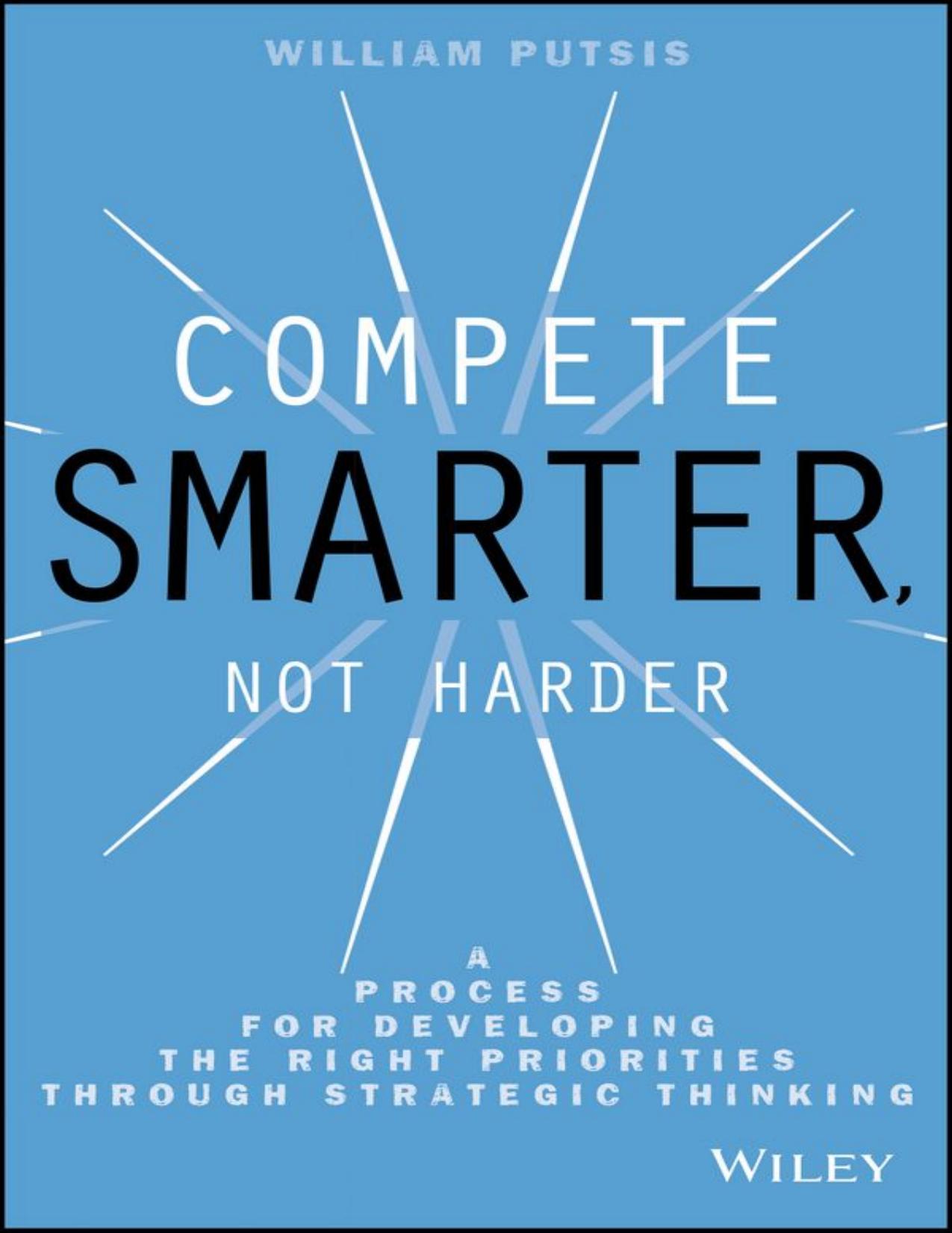Compete Smarter, Not Harder: A Process for Developing the Right Priorities Through Strategic Thinking by William Putsis

Author:William Putsis [Putsis, William]
Language: eng
Format: mobi, pdf
Publisher: Wiley
Published: 2013-10-14T14:00:00+00:00
A few things stand out from this table.
1. A litmus test. Segments A and B are the same. This is the litmus test referenced earlier that indicates that we should not have continued this far in the earlier segmentation exercise. Therefore, we can combine them into a single segment.
2. Must-have attributes. Cost per available seat mile is clearly one of these, as it's a focal point for customer decisions.
3. Segmentation opportunities. Only three out of the four segments are overly price sensitive, and segment C may be interested in paying more if the IFE and CASM are right. This warrants further study.
The second thing for the research team to do at this time is to conduct a segmentation prioritization study. They can use the criteria and weights established earlier to independently evaluate each segment in terms of its size, margins, growth, competition, and so forth. From this, you can derive segment scores (and even place potential distributions on the estimates, run Monte Carlo simulations, and so on) and develop prioritization for each of the segmentation schemes developed. Ultimately, you can determine which one of these to use in practice based on the strategic opportunities that present themselves after all of this analysis; in part, it's simply a judgment call.
III. Segment prioritization and value proposition for key segments
Finally, after the research teams complete this analysis, the strategy teams reconvene. Armed with this information, you can establish priorities across the segments and begin to implement a detailed tactical plan. Part of this plan will be the value proposition defined as follows:
A value proposition is the promise you make to the targeted segments, one that resonates with the key attributes for that segment (fill in the blanks):
For TARGET SEGMENT X, the YOUR PRODUCT OR SERVICE provides KEY BENEFITS [in the customer's mind that they care about] and is better than the competition because of KEY SALIENT DIFFERENTIATOR ATTRIBUTES.
Think about the earlier example. Imagine the segment evaluation had led you to target segment D (short-haul Europe FFD model) and that you were competitive on CASM but had a strategic advantage of superior cargo capacity. In this case, the value proposition for this segment (yes—you need one for each segment and must make sure they are consistent) for the imaginary HondaJet Enterprise 900 is straightforward:
For differentiator airlines operating short-haul European routes, the HondaJet Enterprise 900 provides best-in-class cost-per-available-seat-mile at a competitive delivered price and is better than competitors in this class due to its superior cargo capacity.
Think about what you've derived from this process. The value proposition homes in on the key attributes that the customers in this segment care about and focuses on your strategic competitive advantage (if it doesn't, you need to go back to the R&D or acquisition drawing board). Additionally, the process has led you to appropriately prioritize these segments in terms of your efforts, time, budget, resources, and so on. You deliver the offering to the most important segments with offerings and customer value propositions that resonate with them precisely because they were developed for them.
Download
Compete Smarter, Not Harder: A Process for Developing the Right Priorities Through Strategic Thinking by William Putsis.pdf
This site does not store any files on its server. We only index and link to content provided by other sites. Please contact the content providers to delete copyright contents if any and email us, we'll remove relevant links or contents immediately.
Influence: The Psychology of Persuasion by Robert B. Cialdini(4601)
The Miracle Morning by Hal Elrod(4422)
The Hacking of the American Mind by Robert H. Lustig(4085)
Pre-Suasion: A Revolutionary Way to Influence and Persuade by Robert Cialdini(3977)
Unlabel: Selling You Without Selling Out by Marc Ecko(3470)
Ogilvy on Advertising by David Ogilvy(3328)
Hidden Persuasion: 33 psychological influence techniques in advertising by Marc Andrews & Matthijs van Leeuwen & Rick van Baaren(3292)
Purple Cow by Seth Godin(3069)
Who Can You Trust? by Rachel Botsman(3024)
Kick Ass in College: Highest Rated "How to Study in College" Book | 77 Ninja Study Skills Tips and Career Strategies | Motivational for College Students: A Guerrilla Guide to College Success by Fox Gunnar(2998)
This Is Marketing by Seth Godin(2901)
I Live in the Future & Here's How It Works by Nick Bilton(2844)
The Marketing Plan Handbook: Develop Big-Picture Marketing Plans for Pennies on the Dollar by Robert W. Bly(2795)
The Power of Broke by Daymond John(2774)
Building a StoryBrand by Donald Miller(2754)
The 46 Rules of Genius: An Innovator's Guide to Creativity (Voices That Matter) by Marty Neumeier(2678)
Draw to Win: A Crash Course on How to Lead, Sell, and Innovate With Your Visual Mind by Dan Roam(2639)
The Tipping Point by Malcolm Gladwell(2558)
Market Wizards by Jack D. Schwager(2540)
